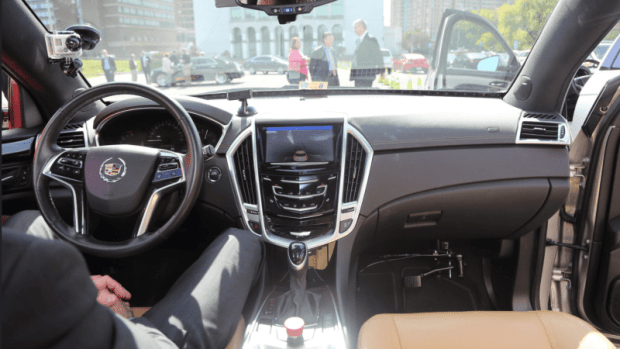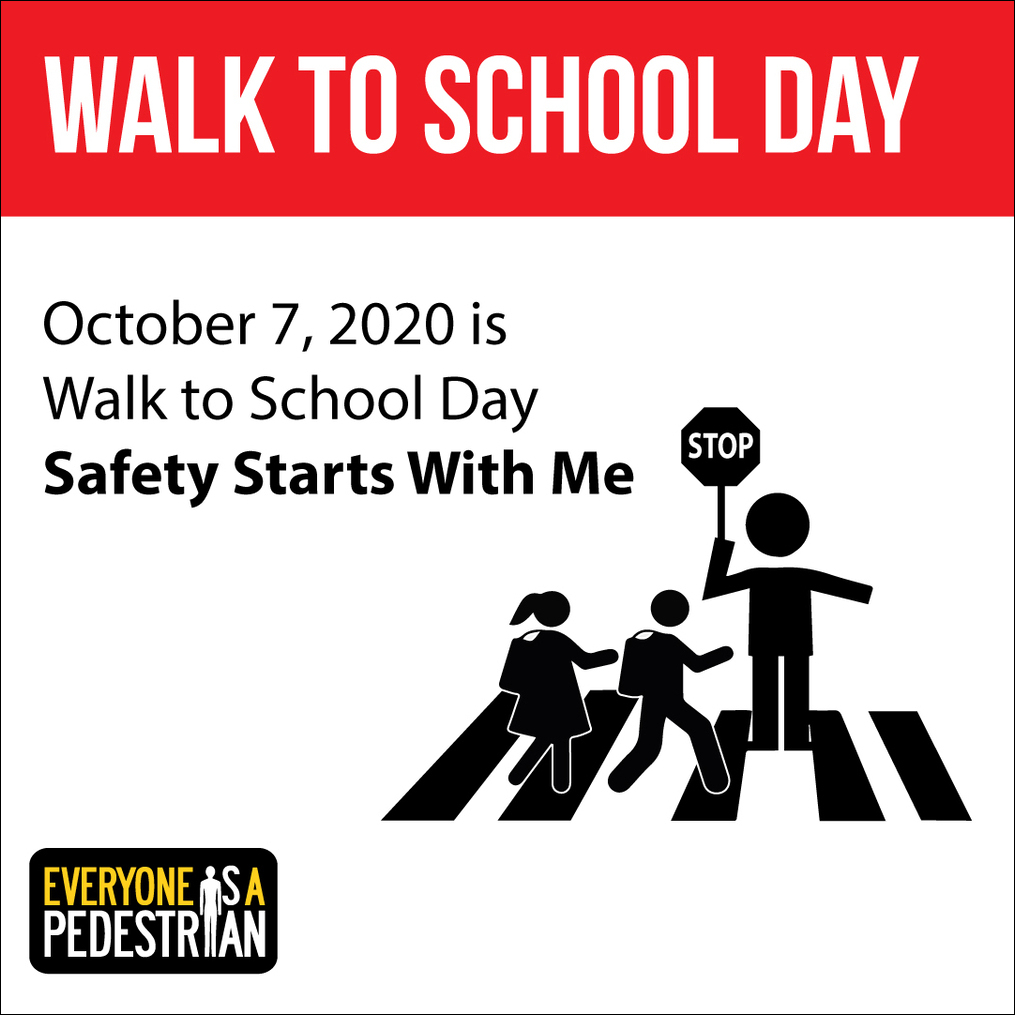The first-ever federally funded "National Pedestrian Safety Month" kicks off tomorrow, and — surprise! — it's centered around a press campaign aimed at convincing Americans of the debunked myth that the key to ending traffic violence is personal responsibility, mostly for walkers themselves.
The National Highway Traffic Safety Administration released its plans for the month-long public awareness effort yesterday, which includes a cache of social media graphics rife with some of the most toxic lies and misperceptions about how to keep walkers safe — and zero mention of real policy and infrastructure reforms that could actually saves lives.
Here are just a few of the low-lights.
Myth #1: Pedestrians have to keep themselves safe
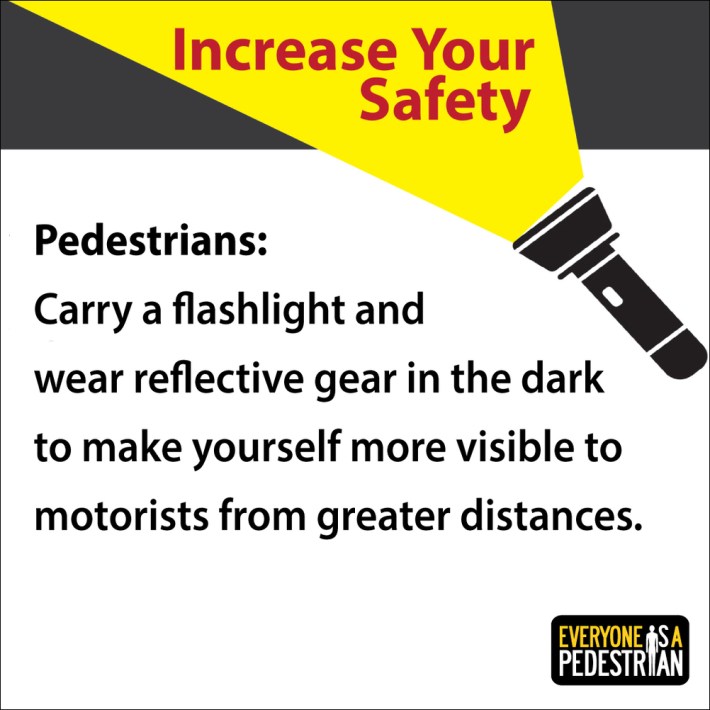
This Instagram graphic trots out one of the most stubborn myths in the book: that walkers can save their own lives if they just turn themselves into human disco balls after dark.
Rather than a graphic announcing that the agency is funding streetlight improvements to make pedestrians visible without hi-viz vests, mandating better headlights on cars (as top safety advocates want them to do), or even simply acknowledging that people wearing light-colored clothing get killed by drivers, too, NHTSA chooses to focus on the personal responsibility of walkers — and ignore the responsibilities of every other contributor to fatal crashes.
Myth #2: The distracted pedestrian
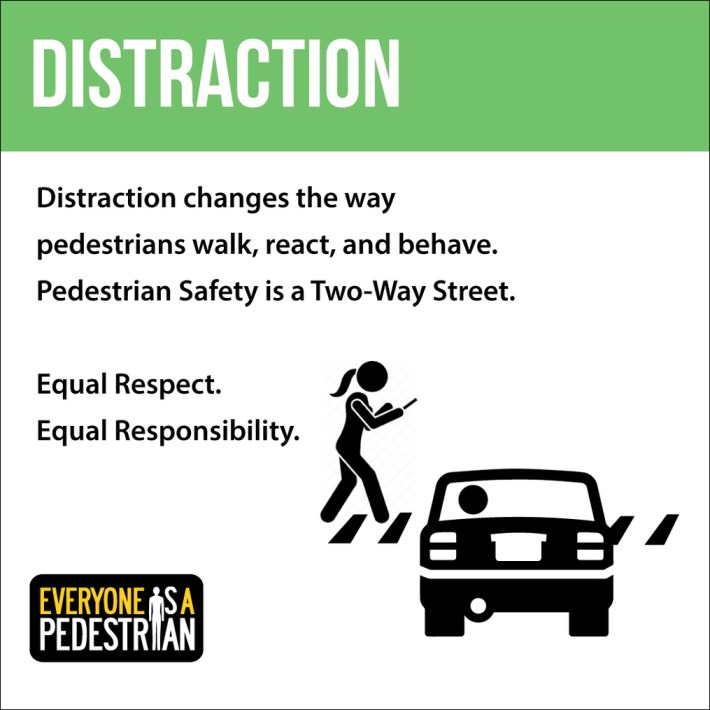
Here's another oldie-but-goodie: the myth of the distracted pedestrian, rampaging through American streets, somehow endangering everyone around her with her...cell phone.
But here's the problem: only about 2 percent of pedestrian crashes involve the use of a mobile phone by the walker, and it's a safe bet that none of them injured anyone but the walker herself, since a human body doesn't tend to do much damage to a motor vehicle, much less the driver inside it.
Distracted driving, meanwhile, was considered a factor in the deaths of at least 2,841 people in 2018 according to the Administration's own data, or about 7.7 percent of all fatalities. And that may even be an undercount, since many states don't even include a field for law enforcement officers to report driver distraction on crash reports.
There is no graphic about the dangers of distracted driving in the Administration's toolkit.
Myth #3: Drunk walking kills
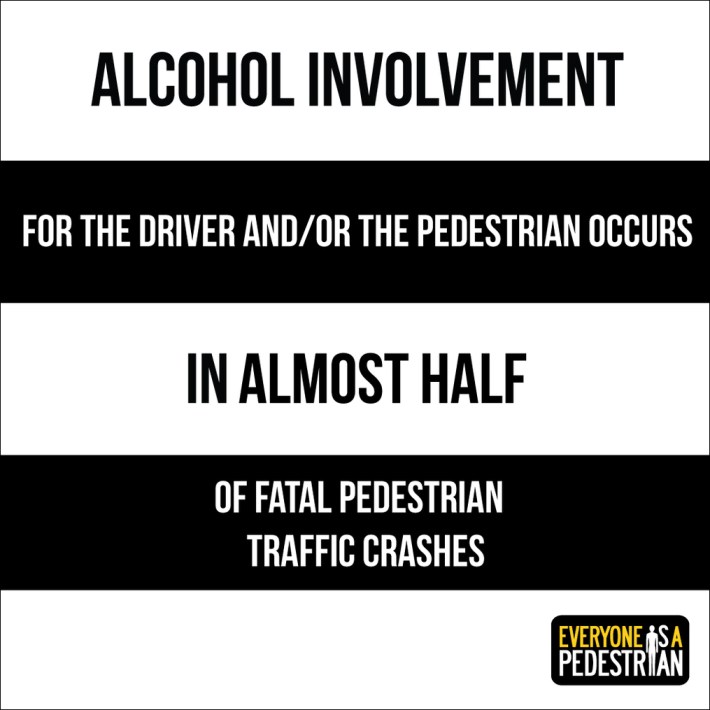
This graphic needs a little demystifying: yes, alcohol is a factor in many pedestrian deaths, and a lot of the time — roughly a third — walkers themselves are drunk when they're struck by car drivers. But here's the thing: walking while drunk, in and of itself, is not a crime, nor is it inherently dangerous to other road users. And in some cases — say, when you can't afford a taxi, and your city has insufficient public transit — it's a responsible way to get home from the bar, at least compared to climbing behind the wheel after you've had a few beers.
Driving while drunk, of course, is illegal, and for good reason — and despite decades of public awareness campaigns and millions of dollars in advocacy efforts, 16 percent of drivers who killed walkers last year were drunk, according to NHTSA's press materials.
Operating an easily weaponizable motor vehicle is indisputably an activity that demands a maximum amount of mental and physical acuity, and staying sober is the absolute least a driver can do. Using a sidewalk, on the other hand, shouldn't require that level of acumen, because differently abled people, children, the elderly, and — yes — addicts all have a fundamental human right to public space that they don't have to the space behind a wheel. A roadway that does require that walkers maintain total self awareness and lightning-fast response times should be redesigned — period.
Conflating the non-crime of drunk walking and the massive public health threat of drunk driving is a dangerous and manipulative way to blame pedestrians for their own deaths — not to mention adding dangerous stigma to addiction in a society that already fails to support recovery from the disease of alcoholism.
Myth #4: Old people die in traffic a lot for...reasons we don't know?
Okay, this one's just confusing.
Yes, friends, it's true: older people are more likely to be killed by cars! But is NHTSA's graphic announcing that cities must lengthen crosswalk signal timing to give elderly people with physical disabilities more time?
Or enhance zoning codes so older Americans, 14 percent of whom live in poverty, can afford to live in comprehensively walkable areas?
Or give the elderly better transit options when walking is no longer a great option for them?
Nope! None of that. The Administration's just letting you know that a lot of dead walkers are seniors...and maybe implying, offensively, they shouldn't walk outside their homes at all if they have the misfortune to live in an area whose streets weren't designed with their needs in mind.
Myth #5: A safe walk to school starts with...ultra-responsible kids?
Here's another baffling insinuation: that surviving the walk to your local elementary school starts with...uh, presumably those little cartoon children.
Let's be clear: a safe route to school starts — and ends — with drivers not running over children. (And, in the case of non-white children, especially, police officers not murdering children.) Engineers can make that a whole lot easier by designing roads that compel drivers to slow down and reduce their chances of committing vehicular manslaughter, even when a little kid gets excited and jogs into the intersection a moment too soon.
But if the difference between life and death of a preschooler is the judgment of the preschooler, rather than the choices of the adults behind the wheel, the road design, or the badge, we've got a problem on our hands that a public awareness alone campaign can't solve.

The Administration also assembled a handy packet of press releases that you can customize to put all manner of bogus traffic violence facts into the mouths of your local officials or non-profit leaders of choice. Those are already getting pretty well dragged on Twitter, but here's a quick fix on this one to inspire you to join the fray:

